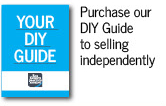
Selling your professional practice comes with numerous challenges that should never be underestimated. Achieving a successful outcome, or otherwise, will often be driven by how familiar both parties are with the process, their knowledge of current market conditions, their willingness to be reasonable within their expectations, and their availability of time to work through the process whilst also running their practices and servicing their clients.
With that in mind, following are just some tips to include as part of a practice sale:
- Leave sufficient time to achieve a positive outcome. The transaction process itself typically takes around 6 months for city and suburban firms, and potentially a little longer for regional firms. Having the added pressure of getting a transaction done prior to the end of a lease or departure of key employee can result in the need to accept an offer that is far from optimal.
- Make sure you compile the appropriate data into an information memorandum. This will save having to collate the data later, thereby stalling the process, and also enables prospective purchasers to obtain a good initial feel about the practice for sale beyond the financial accounts. We have an IM template that can be purchased to assist with this process, click here.
- Qualify the prospective purchasers. How similar are their firm’s attributes and characteristics compared to yours? Is there a good cultural fit? Is finance available? Do they hold the appropriate registrations / qualifications? Limit the number of prospective purchasers with whom you meet.
- Engage the services of a solicitor / lawyer to prepare a confidentiality agreement, and contract for sale, who is experienced in the sale of professional firms. This saves a huge amount of time when it comes to the contract through the removal of inappropriate clauses, whilst also leading with common industry terms and conditions.
- Having a clear plan around what the vendor is going to do during the transition is key. This really needs to be driven by the purchaser in consultation with the vendor. However, simply agreeing to do whatever the other party wants you to do without parameters often leads to dissatisfaction from one or both parties.
Some factors to exclude from a practice sale include:
- The fees being acquired as part of the practice must exclude GST. No purchaser is going to pay a price base on revenue inclusive of GST.
- Unrealistic criteria, conditions, pricing and terms. The more limitations that are placed on a proposed transaction, the less likely it is to take place.
- Client or staff identifying data. Please do not include the name or other identifying information of your clients or personnel in the information shared with prospective purchasers. Yes, staff may be on your website, and the names of clients the eventual purchaser will know, however this is purely as a risk mitigation step initially.
- Open ended clawbacks. We have seen situations where the purchaser has proposed an unlimited clawback of the price paid, including monies paid at settlement, where clients are lost, and revenue is not maintained. A clawback should be limited to the retention sums only.
- Receive payment on the day of settlement, i.e., ensure the agreed upfront payment will be paid at the same time as settlement takes place, not some time after the fact.
Obviously, these are just some of the considerations when endeavouring to sell or buy a practice. For more indepth assistance, please call Michelle on 0413 047 077 or e-mail – michelle@robknightsbroking.com.au.









